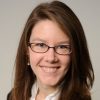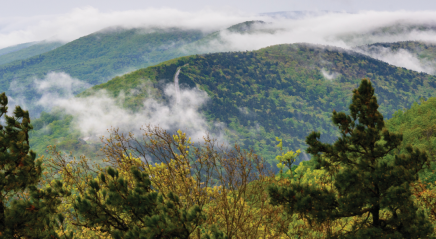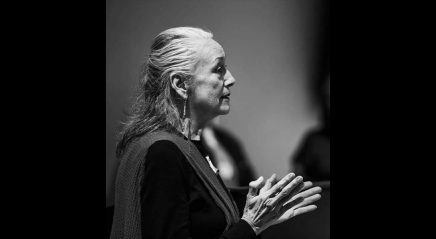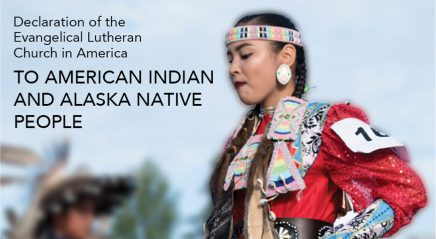An ELCA school is working to strengthen its ties to a local Indigenous community in an effort to find healing by building relationships. In January and February, California Lutheran University in Thousand Oaks began a series of events to mark its “journey of intention” to acknowledge the Chumash land upon which it sits.
California has one of the largest populations of Native Americans in the country, said Lorri Santamaría, the university’s director of faculty development and inclusive excellence. While some schools have land acknowledgments, formal statements that recognize and respect the Indigenous inhabitants of a particular area, Cal Lutheran does not.
Santamaría, a Black Louisiana Creole woman of Choctaw descent who has studied diversity for more than 20 years, expects Cal Lutheran to issue a formal land acknowledgement, which takes time and is guided by Indigenous leaders. Understanding the process to be based in relationship, she asked her longtime friends and Indigenous knowledge keepers Kathy Ann Willcuts and Steven Jon Garcia to help begin a university-wide healing process.
Willcuts, who is Lakota, and Garcia, who is Tongva, Mescalero Apache and Yaqui, first offered a sacred tobacco blessing and an Eagle Dance “to set the intention for the land and invite its ancestors to be a part of the healing offered,” officials explained.
Later, the Indigenous knowledge keepers led a walk across the Olsen Road bridge that connects the south and north sides of campus, which culminated in a land blessing.
“We talked about prayer and forgiveness and reconciliation and healing—all the things that had not been said before,” Santamaría said. “It was cool. I’ve really never seen anything like it.
“This land intention work has created an atmosphere that is more open, more loving and brings in that open and rooted concept that the Lutheran synod … is walking the talk. We’re moving from being performative—we’re just doing this, ticking boxes—to being more substantive.”
“We talked about prayer and forgiveness and reconciliation and healing—all the things that had not been said before.”
The importance of land
In January, Cal Lutheran religion professor and ELCA pastor Colleen Windham-Hughes launched the multidisciplinary honors course “Indigenous Rights and Practices.”
The class itself had been in the works for five years, she said—and learning about Indigenous lifeways was always part of its plan. But Santamaría “brought passion, joy and personal relationships, and lifted public events and ceremony alongside the course,” Windham-Hughes said.
One focus of the course is the importance of Indigenous people having access to ancestral sites and how environmental alliances between justice organizations and Native people can sometimes be uneasy.
Some environmental work “can homogenize or even erase Native peoples while it purports to protect the land for all peoples,” she said. “It obscures the importance of land to tribal peoples. [Many people assume] religion is about belief, which is not connected to land, and is therefore portable. But Native peoples are in an essential relationship with land and Creator; those sites have ongoing importance.”
While neither the founders of Cal Lutheran nor rancher Richard Pederson—who donated the 130 acres upon which part of the university now sits—were the ones who removed the Chumash from their land, there is still a connection that needs addressing, Windham-Hughes said. “There’s not a direct link there,” she added. “Yet, because the Chumash see themselves in a relationship to the land, it matters that these are their ancestral lands.”
The 20 students in Windham-Hughes’ class have worked with Indigenous leaders, including Willcuts and Garcia, as well as Vance Blackfox, ELCA director for Indigenous ministries and tribal relations, who hosted a Zoom discussion with students.
Windham-Hughes hopes this session becomes a regular class listing and that it “won’t be the only course centered on Indigenous people and lifeways.”
A different hurt
The impetus for the land intention events originated from a separate incident on campus that required healing, Santamaría said. The pandemic, though it has been a shared traumatic experience, has showcased other significant national traumas, she said, including racial reckoning and “the hurts and the inequity … around systemically underserved students, who at this campus are Black or African American or Latinx or LGBTQ students.”
In spring 2020, the student body was invited to a Zoom meeting to address racism, and several disagreements between groups came to the surface, Santamaría said. Shortly thereafter, the nation went into lockdown, leaving the tension on campus unresolved. “So this heaviness, this discord, is what we all walked into in the fall of 2021,” when students returned to campus, she said.
For this reason, Santamaría wanted to begin a healing process immediately. But she felt the university needed to start at the beginning. “In diversity, equity and inclusion work, [among] all the groups that have shared oppressions, Native Americans have [borne] the brunt of genocide and discrimination,” she said. “Not having anything around this land and skipping to the white-Black problem doesn’t make any sense at all. [Land intention work] is where we needed to start. It was a prerequisite to diversity, equity and inclusion work.”
“[Land intention work] is where we needed to start. It was a prerequisite to diversity, equity and inclusion work.”
Future healing
Since Cal Lutheran hosted its initial land intention events, Chumash leaders and the university have been in regular conversation.
In February, Windham-Hughes and Santamaría participated in a Zoom meeting with seven Chumash leaders, including a recent graduate and a current senior, who spoke about “how difficult it is to be one of a very small number of people on a college campus,” Windham-Hughes said.
Now that a relationship has been established, the university can discuss ways to make Cal Lutheran more welcoming for Native students, she added.
Equally important, Santamaría said, a Chumash-led land acknowledgment can get underway, and healing and growth can continue in other ways.
One student already has expressed interest in starting an Indigenous student club. Scholarships specifically for Chumash students could be another option in the future.
Santamaría wants people to understand that the healing the university has worked toward, both with land intention and racial issues, is a collective endeavor. “This is for everybody; this work is for all of us,” she said. “It’s not benefiting one group or two groups or three groups. It’s for all people on our campus and in our society. … People don’t understand [that] when you participate in these things and you honor their differences, you realize this work for all of us. You want the campus to be a place where all the students have a sense of belonging … then you’re going to get the highest result: the best education, best leadership.”
Santamaría hopes Cal Lutheran continues this story of healing: “To me, it’s a journey of relationship building. It’s about people more than it is about land. We started with the land because we’re placed in this location, but it’s the people, the relationships.”










